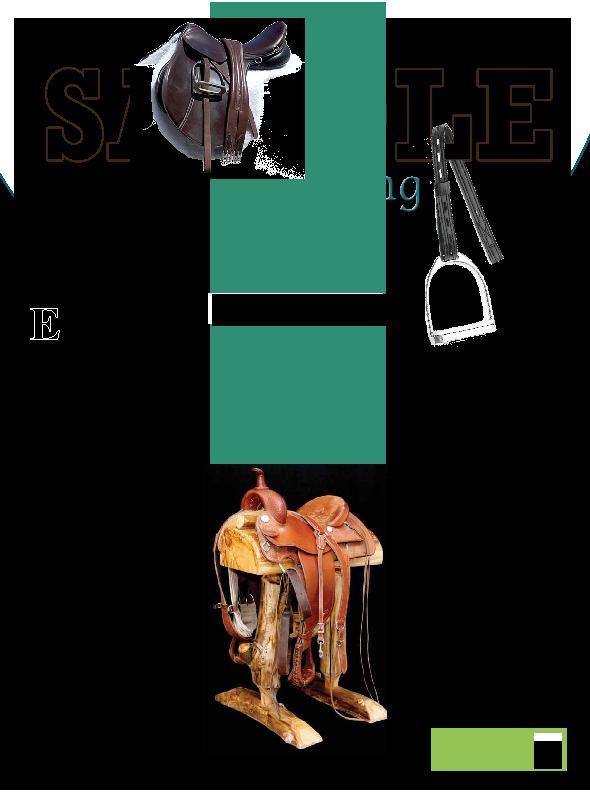
Leather or synthetic,
custom made
or off-the-shelf.
Part 2: by Julia McLean
Looking at material
and design to select
the best option for
both horse and rider
ntering
into the saddle
buying phase presents a
myriad of daunting issues. With so
many to choose from it can be, and
often is, very confusing even for the
most experienced of shoppers.
Arming oneself with the essential
break down in the purchase process
will establish the base from which
to start.
Establishing the purpose for the
saddle immediately defines direction.
The FEI dressage competitor will be
seeking a very different saddle to
that of the young rider venturing into
the sport, likewise the event rider
competing at 3* will have differing
expectations from their jump saddle
to those of the rider happy riding in
the lower levels.
Unless at the very cheapest end of the
market, almost every saddle should
be able to be fitted to the horse to the
degree where it is comfortable.
Riders must be comfortable and
balanced in the saddle. It must
accommodate their physical
variations discomfort or lack
of support will cause a rider to
unconsciously,
or even consciously, push
away or sit in a manner greatly
altering their ability to maintain a
correct and stable position
-
leaTHer or SynTHeTic
A fine leather hand crafted saddle
is a work of art and something
to be treasured hence leather
saddles will often be the desired
choice. Leather is selected for its
beauty, strength and longevity and,
undoubtedly, due to its long history
as the material of choice in the ever
traditional equestrian scene.
A leather saddle, following a
sufficient breaking-in period and
the right care, will take on the
rider's shape and become supple
and soft, however, leather is
more expensive because the raw
product in a desirable quality costs
more than the synthetic materials
available. Hides can vary in quality
and finish and be rejected for

